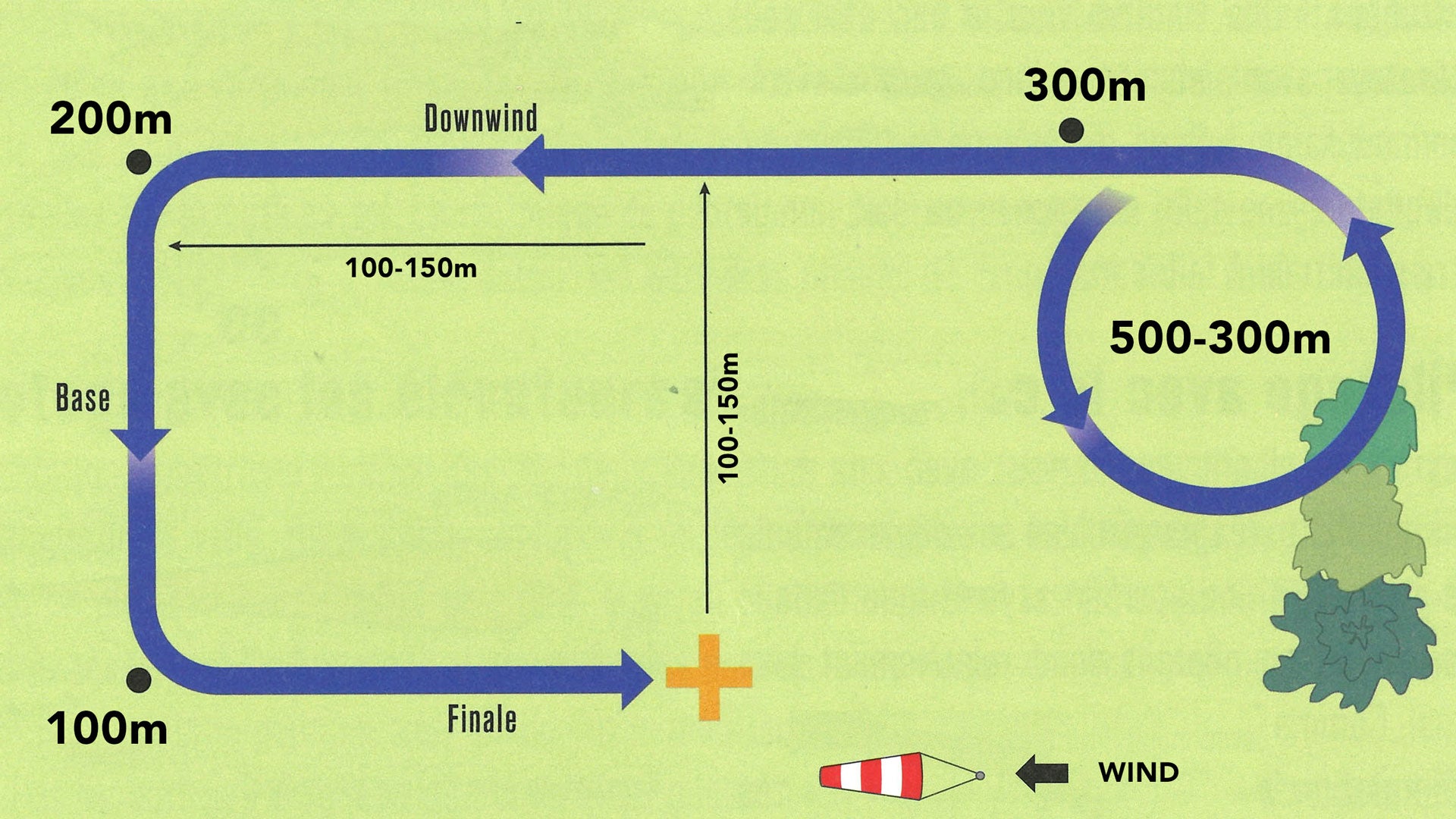
Skydiving landing volte
How to land correctly with a parachute?
Landing volley
When landing an airplane, the pilot must follow a pattern in order to land correctly. This volley allows him to make a safe, precise and regular landing. In skydiving, we take great inspiration from this procedure.
This landing volley is made up of a primary part and three main parts: the destruction zone and the downwind, the base and the final. In French: tailwind, base and final. For reasons of simplicity we will use English terms . This volte can be done with turns to the left (left hand volte) or to the right (right hand volte). Generally, there are two landing directions which are defined by the wind. In addition, the latter modifies the different distances and altitudes each time. Finally, each dropzone has its small specificities that must be taken into account and the wind plays a main role. These different scenarios require skydivers to obtain detailed information before each jump.
The following altitude and distance indications are ideally applicable. Of course, they will vary depending on the weight of the skydiver, the size of the canopy and the strength of the wind as well as the aerodromes. Therefore, if you wish to transpose these indications to your landing flight, but a doubt remains and you are not sure of your move, you must contact an instructor for more information. .
Landing direction
The first question that arises is: which way do I land?
In most aerodromes, the direction of landing is defined according to the landing strip for aircraft. So 2 meanings are generally possible! To know the circuit to make when landing, you must already know which way the wind is blowing: a landing is always against it. All aerodromes are equipped with a windsock and flags which make it easy to read the wind. In the event that there is no wind, there is generally a prioritized direction defined by the aerodrome.
Kill zone
Before starting the landing pattern, the parachutist must head into the destruction zone. As its name indicates, it is an area which allows you to reduce the altitude to initiate the volley with the downwind. It is commonly said that you should be at least 500m/ground in the destruction zone.
Downwind
The destruction zone ends at ~300m/ground, where the landing circuit with the downwind begins. The downwinder is flown in line with the wind, with the wind blowing behind you. It all depends on the strength of the wind, this is the fast part of the circuit. Indeed, fast also means distance! So, you have to be careful not to go too far at the risk of not being able to get back to your goal. Ideally, you should fly 100-150 meters further from the target.
Base
Arriving at ~200 m/ground and approximately 100-150 meters behind the target, at the end of the downwind you must make a 90° turn to the left as in the example. The parachutist will find himself perpendicular to the wind. Be careful, here there is the risk of being blown away by the wind. If the skydiver realizes he is too high, he can go back and forth. Indeed, the base is the best place to adjust your altitude. However, always remember that there may be other skydivers in the air.
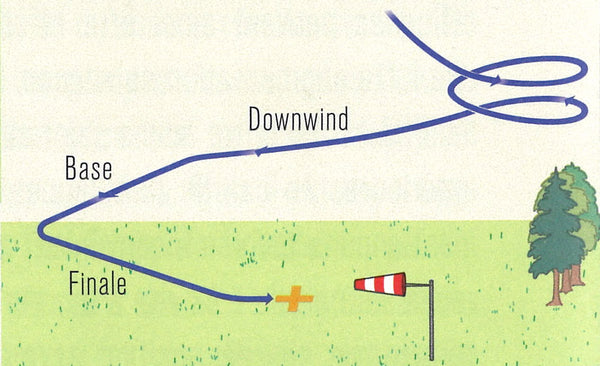
Final
Finally, once at ~100m/ground you must make the last 90° turn to the left at the end of the base. This is when the skydiver will notice if he has done the steps mentioned above correctly. Normally, his target should be in front of him at an angle of 45° to the ground! If so, then it will land exactly in the defined area.
Making a precise landing is very difficult at first because there are few landmarks. Often, skydivers talk about a habit. Indeed, precision comes with training and mastery of this feeling. But by following these points, a novice can land on or near his goal.
To understand all these explanations with a concrete case, we will explain, in a following blog, how to land and do the landing flight on our aerodrome with all its specificities.
We also post on our social media every time a blog comes out. So don't forget to come to our site regularly or subscribe to our social networks so you don't miss anything.
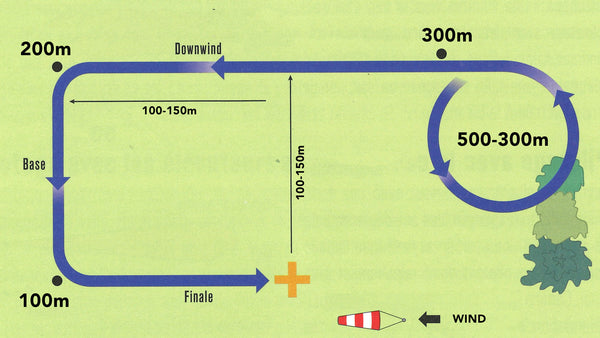
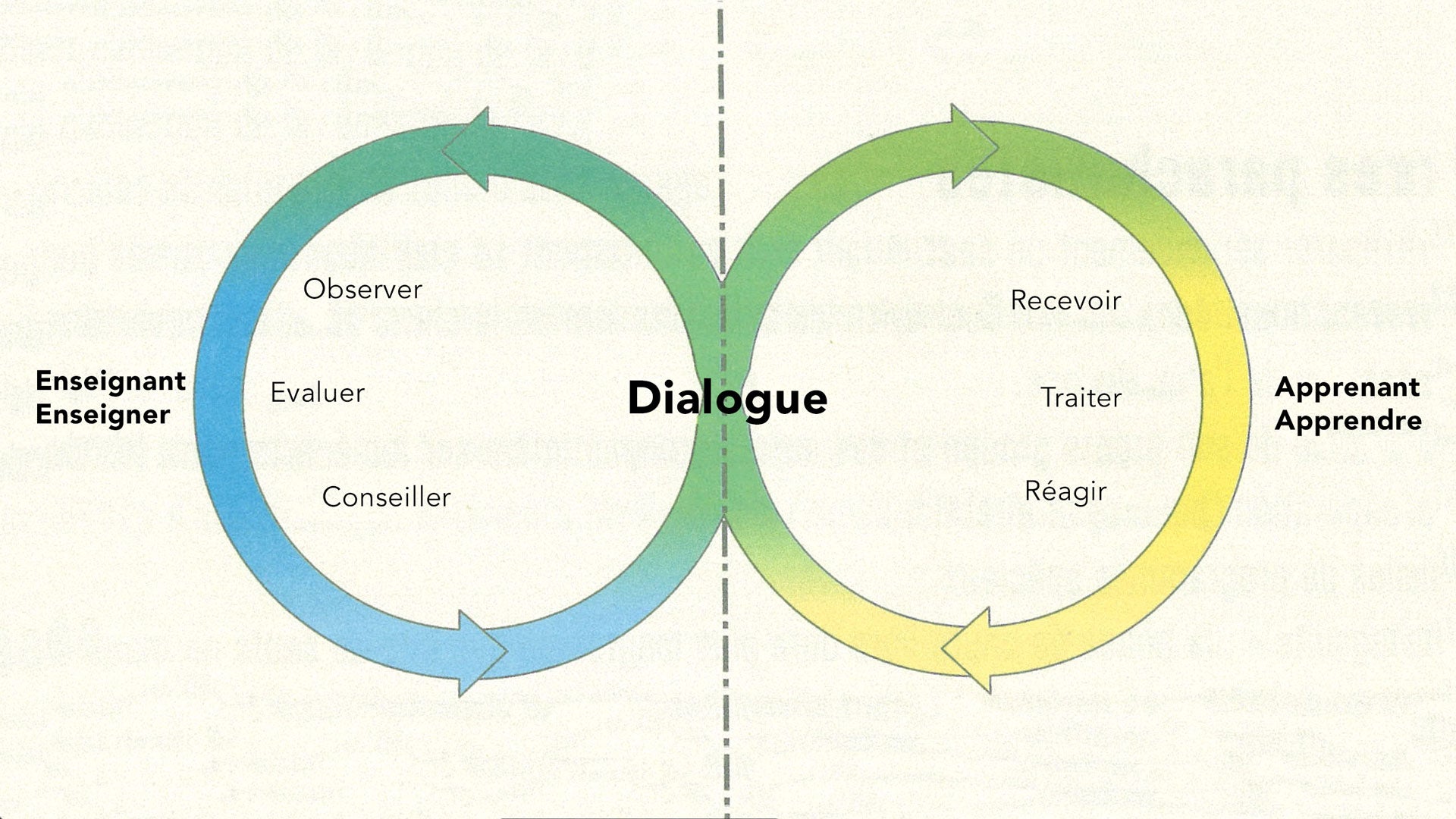
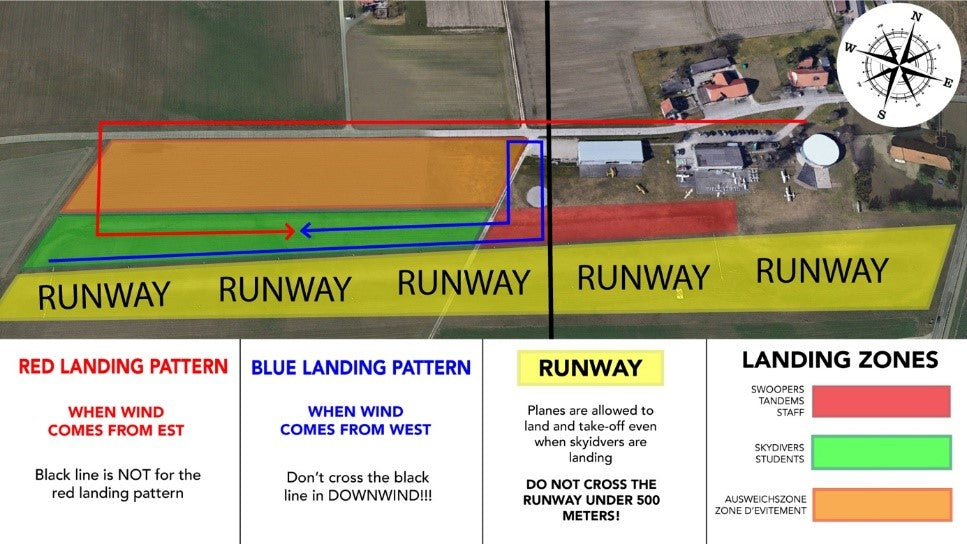
Leave a comment
This site is protected by hCaptcha and the hCaptcha Privacy Policy and Terms of Service apply.